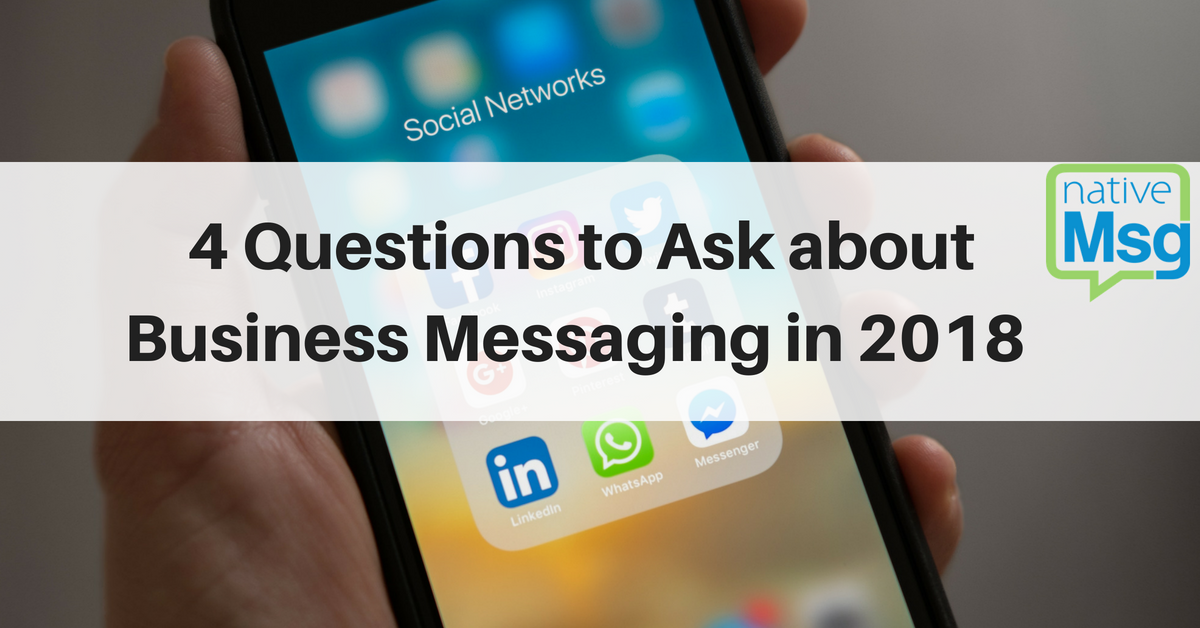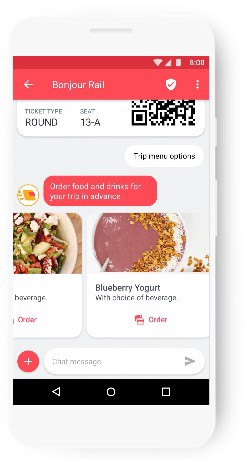
Almost 99 percent of the time “ready, fire, aim” is a horrible action plan. But business messaging in 2018 does require that spirit of urgency. No matter where you start, making a start in business messaging means you’ll likely be ahead of the curve in customer engagement.
But given the current landscape, where and how should you start? What do you need to know to position your business to best execute and engage in messaging?
Business Messaging Landscape in 2018
It’s understandable that business messaging is somewhat of a quagmire. There’s a few leaders in big tech racing to secure the lead:
Google adopted RCS Business Messaging and offers it on Android. Google aims to leverage Android’s expansive user-base to adopt the service as a universal messaging upgrade from SMS.
In the last year, WhatsApp has been hinting at a new business messaging application in policy terms. Then, rolled out WhatsApp for Business earlier this year to also leverage the popular platform so that businesses can now actively message consumers there.
Facebook Messenger has a strong hold already with Messenger and businesses have actively begun using it for chatbots, business messaging and e-commerce.
Not to be outdone, Apple rounded out the pack in spring with Apple’s Business Chat, which gives businesses the ability to message iPhone and iMessage users.
So, how does your business make sense of this in your marketing and engagement strategy?
Disconnected Messaging Spaces, APIs
Given that there’s no universal crossroad in the messaging space, the standard now– is that there is no standard space. Adding to business frustration is the complexity. Currently, there’s no axis, like a universal API, that easily supports transmission, data security and universal features.
It now falls on the business’ dime to disseminate the rapid partnering, between customer engagement platforms, providers and big tech, to determine your best entry point where you’ll capture the most engagement. Or, just go sign up for all of it, which isn’t easy in execution or for operational resources.
That’s just the back-end strata. In terms of consumer-facing appeal, businesses must then confront and overcome possible friction points within each of these spaces. Simple user authentication touch points and context creation with flexible features to address all use-cases are necessary.
1. How Do We Scale in the Current Disconnected Messaging Environment?

Do you need to be in all these messaging spaces to be successful? The old adage is to work smarter not harder, but some experts do suggest that this is exactly what’s needed. Except that this approach doesn’t account for the rapid advances in the space. The best way to scale is to encourage a step-up in data and marketing audits, first. To scale in any industry, no matter the technology, it’s helpful to first understand these three areas:
- Do we have a central, shared hub for all market-driven data? Poor planning accounts for a lot of failure at the start-up level. Centralizing data access for all departments encourages ease in both growth and scaling.
- Do our marketing metric KPIs effectively prove return of investment? To date, 43 percent of companies touted measuring ROI as the biggest challenge in marketing. With so many marketing channels, touch points and measurability apps, it’s tough to not get sidetracked by ROI “bling.” But, a sure-footed approach is to focus on the top business goal and track the metric that bets fits that. To be sure, awareness, conversion, lead-build and engagement are all parts of the whole. But marketing efforts need to address the overarching goal for a campaign and most of the time, these fall into a few buckets: profit and sales revenue.
- Have we structured marketing and work flows as best practice methods and strategies for our brand? In other words, can efforts be replicated?
When these foundational components are in place, you can clarify and address opportunities in messaging channels.
2. How Do We Vet CX Platforms for Business Messaging?
This is really the fulcrum question for how businesses can move forward successfully in the messaging space. Determine how a platform can grow with your business needs, what partnerships leading platforms are currently pursuing and how engagement platforms plan to adapt to the new messaging space.
Recent data shows that 59 percent of consumers feel businesses have lost the thread when it comes to human experience. Verify that the platform you currently use or are considering offers features that truly helps you focus on humanizing the experience.
As chatbots are one of the key CX trends in 2018, deploying a chatbot within a messaging space can actually humanize the experience. Brands with strong omnichannel strategy retain 89 percent of customers, and no matter which platform you choose, engagement on social messaging channels is readily feasible with a chatbot application.
3. What’s Really the Current Trending Channel Scope?
It may be helpful to look at how a chatbot platform integrates with existing CX engagement platforms. The large messaging spaces do share equally large user bases. Consider that both Messenger and WhatsApp have about 1.3 billion monthly users and that Android has 2.1 billion active users with a forecasted 5 billion by 2019, and the question of which playing field to pursue isn’t as important as…whether your business is getting in the field to play.
Facebook Messenger is trending as the most used messaging app worldwide, with 11 percent of the global population messaging on it. Sure, Android users can access Messenger on their devices, but Android Messages, now the default messaging app for Android, is fast becoming a competitive avenue for business messaging.
The large user-base for Android is a fertile space to launch a universal messaging app to replace SMS. Google’s Rich Communication Services (RCS) support, called “Chat,” is a rich feature protocol that provides many upgrades consumers have come to expect in the messaging space (like read receipts, audio and video messaging and even group chat).
Early this year, Google offered an early access program to deliver RCS Business Messaging. RCS messaging works on Android OS, and could be adopted by Apple down the line. That makes it attractive for carriers since Android currently dominates the mobile phone worldwide market-share. Moreover, Google’s addition this week of Android Messages for the web, which now enables website texting, may further the appeal for business messaging there.
4. How Can Our Business Leverage Current Messaging Spaces?

One of the solutions right now is to deploy conversational AI within messaging channels. While you can access several bot-builder apps on Facebook Messenger, brands and enterprise business require a platform that will integrate with their marketing stack. Conversational AI can be deployed across channels, from Slack to Facebook Messenger, Kik and even to enable Alexa Skills for voice assistant experience in messaging.
You can also expect that every business messaging space will have a similar engagement offering akin to what social currently provides. Your business should factor-in paid advertising within messaging and how to harness rich messaging to engage customers, which many messaging apps are already offering for B2C messaging.
Business messaging with chatbots is the easiest way to create an omni-channel presence, automate simple customer service tasks and even gather analytics from all messaging channels in one space.
The reality is messaging isn’t a space leveraged by most businesses. Addressing user authentication and friction points in campaigns there––from voicing to how communicating there offers value to your target audience––will help you develop best practice approaches within your messaging campaigns.
Free Trial
Get Started With RCS
Business Messaging!
Unlock the power of RCS and revolutionize your customer engagement.


